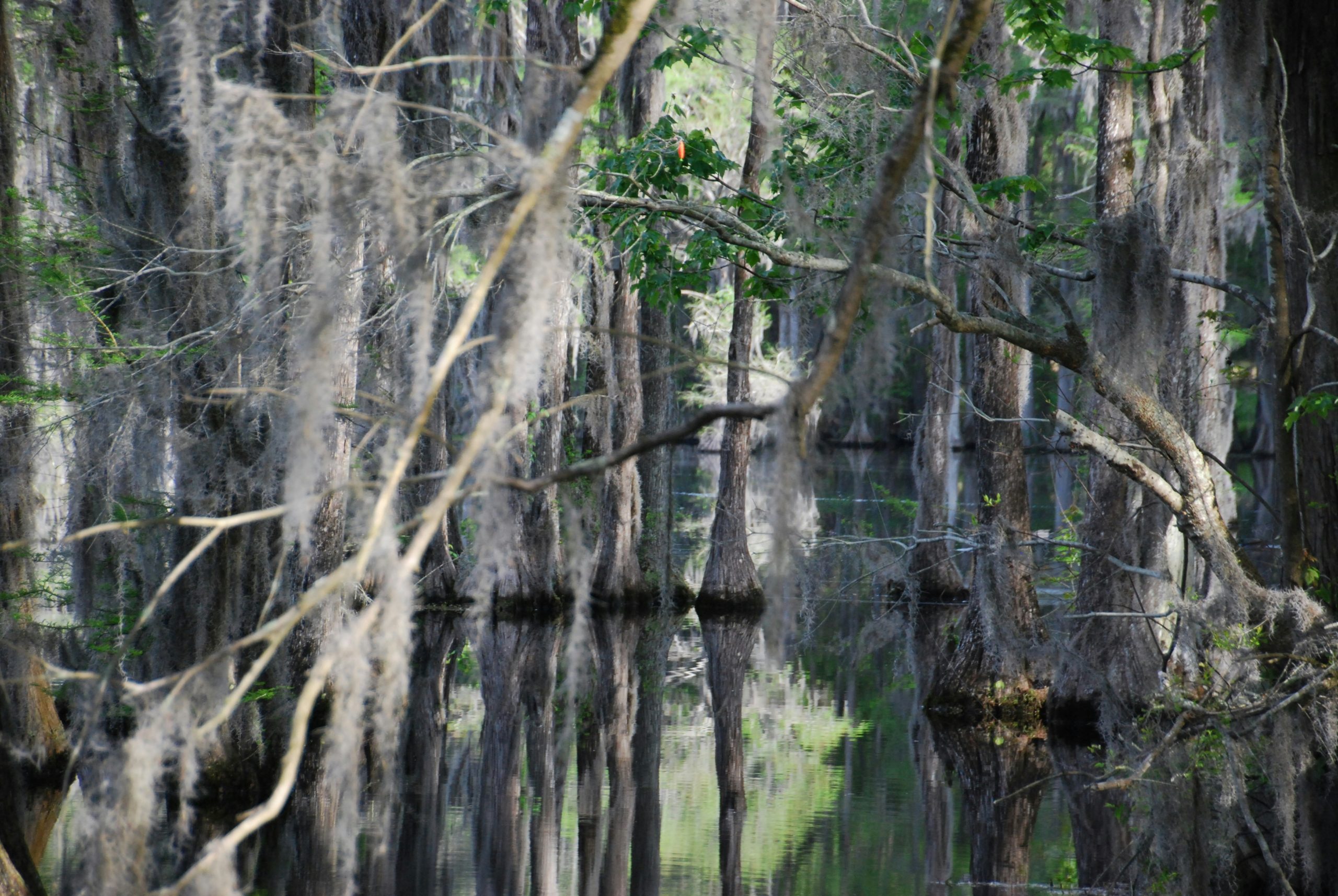
Sloughs are slow-moving or still water systems that serve as an important ecosystem component connecting rivers and floodplains such as the Apalachicola River in northwest Florida.
However, sloughs of the Apalachicola River have become hydrologically disconnected from the mainstem due to the impact of failed navigation projects such as channel incision, disposal of dredge spoils, and reduced flows from upstream.
To predict the impact of proposed physical interventions to restore more normal slough flow conditions, we conducted a hydrodynamic analysis using the HEC-RAS model.
This analysis compared the observed discharge through the slough from June 2021 to June 2023 with the predicted discharge after implementing two proposed restoration actions, assuming no change in water surface elevation at the slough inlet.
Under current/pre-restoration conditions, measured streamflow declined sharply through Spiders Cut as the main river water level receded, resulting in irregular flows and, eventually, total interruption of flows to the receiving floodplain swamps, often for several months.
A post-restoration scenario involving the excavation of the sediment obstruction at the head of the slough predicts an annual flow increase of ~200%, mostly occurring during conditions of moderate flow. Full restoration and excavation of a defined template through the full length of the impaired channel is predicted to yield a 470% annual increase in flow compared with pre-restoration conditions.
With full restoration, Spiders Cut will maintain continuous water flow throughout the year, providing a constant water supply from the main river water in the mainstem flow of ~300 m3s−1 or greater (below this, slough will not get water) to the swamp ecosystems downstream.
This study highlights the value of modeling scenarios in restoration planning. It shows key differences in benefits resulting from restoration scenarios ranging from partial excavation only at the head of the slough to removal of sand blockages along the length of the slough channel in restoring hydrological connectivity to floodplain swamps.
Kumar, L., Deitch, M. J., Jones PE, W. K., Walls, S., Kondolf, G. M., Mossa, J., & Kumari, R. (2025). Modeling Changes in Flow Dynamics From the Restoration of a Distributary Slough Along a Large Floodplain River. River Research and Applications: 1–18.
Photo by Karen Eschler on Unsplash